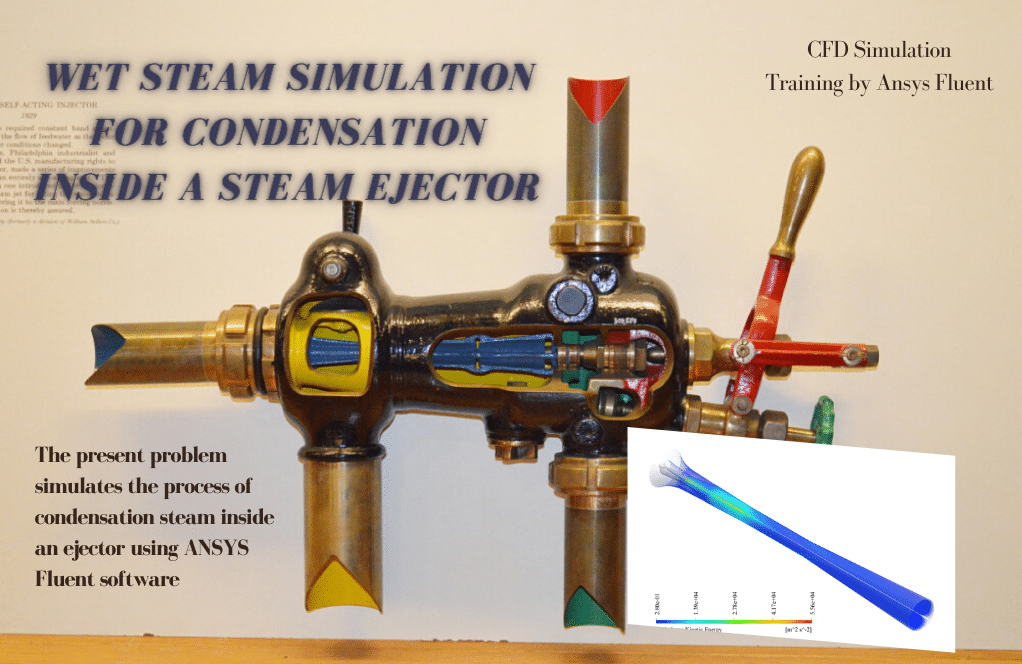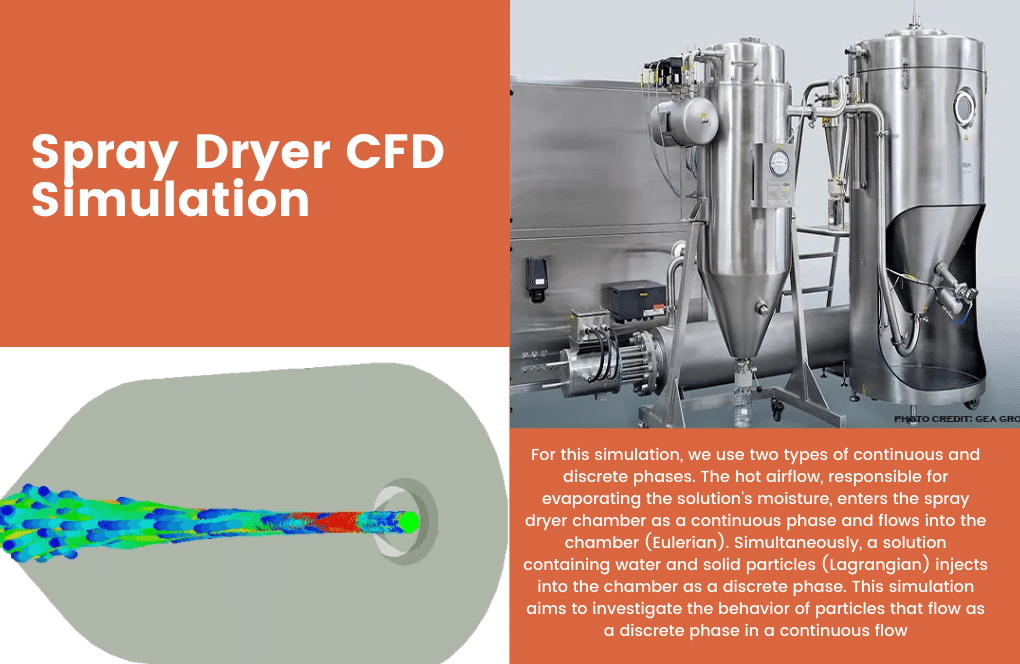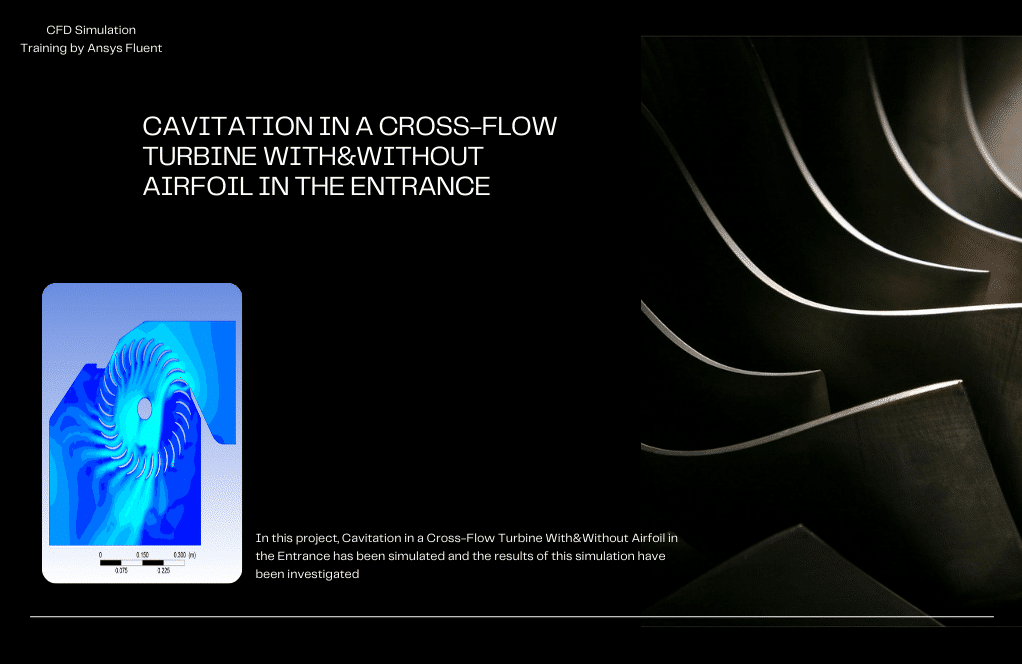Mass Transfer Training Package, 10 Practical Exercises for ADVANCED Users
$399.00 $199.50 Student Discount
This training package includes 10 practical Mass Transfer exercises using ANSYS Fluent software for Advanced users.
Click on Add To Cart and obtain the Geometry file, Mesh file, and a Comprehensive ANSYS Fluent Training Video.To Order Your Project or benefit from a CFD consultation, contact our experts via email (info@mr-cfd.com), online support tab, or WhatsApp at +44 7443 197273.
There are some Free Products to check our service quality.
If you want the training video in another language instead of English, ask it via info@mr-cfd.com after you buy the product.
Description
Mass Transfer ANSYS Fluent CFD Simulation Training Package for ADVANCED Users
This training package includes 10 practical Mass Transfer exercises using ANSYS Fluent software. MR CFD suggests this package for ADVANCED users familiar with elementary Mass Transfer theories and simulation and who want to become professionals.
Cavitation
The cavitation phenomenon is one of the phenomena in that vapor bubbles are formed in the part of the fluid whose pressure is low. Sometimes there is a misconception that the only reason for this phenomenon to occur and the formation of steam bubbles is because the liquid pressure reaches the vapor pressure (P_v). However, various other factors and parameters cause this phenomenon to occur. In project number 1, the fluid flow of water and the cavitation phenomenon around an INDUCER inside a pipe is simulated.
Project number 2 simulates the cavitation phenomenon inside a radial flow PUMP. This pump is of the centrifugal pump (radial flow) type; In this way, the desired fluid enters it parallel to the central axis and exits it radially or perpendicular to the inlet path. Also, the multiphase VOF model is used.
In project number 3, which has been done by the CFD numerical simulation method, cavitation has been simulated in a cross-flow TURBINE. Unlike most turbines where the flow is axial or radial, the fluid flows crosswise. This project has been done in three main parts. In the first case, which is without airfoil, but in the second case, to prevent cavitation, an airfoil is placed at the Entrance, and in the third case, the airfoil angle compared to the second case is 15 degrees in a clockwise direction.
Sprays
Air freshener is one of the tools in home decoration that has a stunning effect to stylish and modernize the house. The restroom is one of the essential parts of a home. So to be able always to have a clean restroom, we suggest that you have a quality air freshener so that you always have a clean and fragrant restroom. Project number 4 investigates the spraying of Air fresheners in the restroom by the Two-way DPM method.
In project number 5, we use two types of continuous and discrete phases. The hot airflow, responsible for evaporating the moisture contained in the solution, enters the spray dryer chamber as a continuous phase and flows into the chamber (Eulerian). At the same time, a solution containing water and solid particles (Lagrangian) injects into the chamber as a discrete phase. The main purpose of this simulation is to investigate the behavior of particles that flow as a discrete phase in a continuous flow.
In project number 6, which has been done by CFD numerical simulation method, The spray drying chamber is simulated by the two-way DPM & Species Transport model. The particle diameter is 1 mm, and the flow moves at a speed of 1 m/s.
Condensation (Mass Transfer)
Project number 7 simulates the process of condensation inside a steam ejector. When the Wet Steam multiphase model is used, two sets of transport equations are solved: the mass fraction of the condensed liquid phase and the number or concentration of droplets per unit volume. This phase change model involves forming liquid droplets during a homogeneous non-equilibrium condensation process based on the classical non-isothermal nucleation theory. According to the continuity equation, the ejector structure is in the form of a convergent-divergent tube which, by entering the driving fluid into it and passing through the converging part of the nozzle, causes the velocity of the passing fluid to increase by reducing the cross-sectional area of the flow.
Boiling
In project number 8, the difference between HRIC, compressive, and Geo-reconstruct models and their effect on the output results were discussed by changing the volume fraction discretization. The computational domain is a 15 x 15 cm cube with a 2 x 2 cm heated surface. The change in volume fraction discretization showed no significant difference in surface temperature and heat transfer coefficient. The Geo-Reconstruct model visually models a more realistic simulation with a higher computational cost.
Heat pipe
A HEAT PIPE is a heat transfer device that transfers heat between two solid contacts via mass transfer. A typical heat pipe is a sealed pipe or tube composed of a suitable material with the working fluid, such as copper for water heat pipes or aluminum for ammonia heat pipes. In project number 9, the heat pipe problem was simulated. The project was analyzed using the multiphase VOF model and activating the mass transfer of evaporation and condensation. A hot wall with a temperature of 400 K and a cold surface with a temperature of 300 K was assumed.
Rice Dryer (Mass Transfer)
When rice is harvested, it contains 20-30% moisture which can corrupt the grains in the shortest time. Therefore, drying the grains after harvesting is important before storage and sending them to the rice mill. In project number 10, a rice drying device has simulated using the Two-way Discrete Phase Model (DPM) & Species Transport Model, and then the results were investigated. Hot air enters the drying device, and then 120000 rice grains with 10% moisture are injected randomly for 6 seconds.
Reviews
Related products
-
Swamp Cooler Application for Building HVAC Simulation
Rated 4.75 out of 5$80.00$40.00 Student Discount















Bradford Morissette –
How does the training package deal with the boundary conditions in mass transfer problems?
MR CFD Support –
The package takes into account the boundary conditions when dealing with mass transfer problems, ensuring accurate and reliable results.
Destany Stehr DVM –
Can this package be used for educational purposes, like in a university setting?
MR CFD Support –
Absolutely. The package is not only suitable for industrial applications, but can also serve as a great learning tool in an educational setting.
Dr. Mervin Lehner –
What versions of ANSYS Fluent software are compatible with the Mass Transfer Training Package exercises?
MR CFD Support –
The exercises in the Mass Transfer Training Package are typically compatible with the latest versions of ANSYS Fluent. It is frequently updated to ensure compatibility with the most recent software releases, but to get a specific answer for the exact versions supported, you may want to reach out to MR CFD’s customer support for clarification.
Prof. Yasmin Gulgowski IV –
The Practical Exercises for ADVANCED Users in Mass Transfer looks exactly what I need to further my skills! Do you cover the specific differences of the implemented discretization models for boiling in detail during the training?
MR CFD Support –
Yes, the training package includes detailed discussions on the differences between HRIC, compressive, and Geo-reconstruct discretization models, along with their effect on the simulation results. It’s specifically addressed in project number 8 of the training package.
Enid Murazik IV –
The projects mentioned include complex simulations involving mass transfer, cavitation, sprays, condensation, boiling, and heat pipes. The descriptions are highly technical – could a beginner understand and perform these exercises after going through the training package, or is prior advanced ANSYS Fluent knowledge required?
MR CFD Support –
The training package is specifically designed for ADVANCED users proficient in elementary mass transfer theories and simulation. Prior knowledge and experience in ANSYS Fluent simulations are required to extract the full benefit from these exercises. Therefore, beginners might find these exercises quite challenging and may need to gain fundamental understanding and hands-on experience with simpler simulations before attempting this advanced training package.
Lessie Huels –
I’m interested in the Mass Transfer ANSYS Fluent Training Package. How does it handle simulations involving multiple species?
MR CFD Support –
Our package is designed with robust algorithms that can effectively handle simulations involving multiple species. It ensures accurate and efficient simulation of mass transfer phenomena.
Bennie Klocko –
Extremely impressed with the Mass Transfer Training Package for advanced users! The mix of ten different practical exercises offers such diversity and depth, especially appreciating the real-world applications like the spraying of air fresheners and the critical nature of rice dryer simulations. The inclusion of various models, such as VOF for multiphase flows and DPM for particle-laden flows, ensures a robust understanding of mass transfer phenomena. Thank you for providing a challenging yet enlightening learning experience!
MR CFD Support –
Thank you for sharing your positive experience with our Mass Transfer Training Package! We are gratified to hear that the practical exercises met your expectations and provided you with valuable insights into intricate simulation scenarios. Your acknowledgement motivates us to continue offering high-quality training for advanced CFD users like yourself. If you need further assistance or have any queries, feel free to reach out. Happy simulating!
Mrs. Elizabeth Wisoky –
I am blown away by the comprehensive coverage of mass transfer phenomena in this package. The practical exercises provided a wholesome understanding of various complex systems, and the detailed analysis greatly enhanced my skill set!
MR CFD Support –
Thank you for your positive feedback! We’re thrilled to hear that you found our Mass Transfer Training Package for ADVANCED Users informative and beneficial. It’s wonderful to know that the exercises helped in enhancing your understanding of different mass transfer systems. If you need further assistance or have more queries as you continue to explore advanced simulations, feel free to reach out. Keep up the great work!
Terrill Heller –
I’m working on a project involving mass transfer in a multi-component system. Can this package accommodate that?
MR CFD Support –
Yes, our package can handle simulations involving mass transfer in multi-component systems. We are also open to contributions and can customize the simulations to suit your project requirements
Ms. Melba Gutkowski Jr. –
I just finished working through the Mass Transfer Training Package using ANSYS Fluent, and I must say, as an advanced user, I was tremendously impressed. The selection of exercises, especially the spray drying chamber and heat pipe simulations, were challenging yet incredibly satisfying once completed. Not to mention, the depth of explanation for different models and their impacts on the results was enlightening. This package truly took my understanding of mass transfer to a professional level.
MR CFD Support –
Thank you so much for your positive feedback! It’s wonderful to hear that the training package met your expectations and that it provided you with a challenging yet rewarding experience. We’re thrilled to know that it has helped enhance your understanding to a professional level. MR CFD is committed to offering top-quality learning experiences for advanced users like yourself, and your success is what motivates us to keep improving. Keep up the great work.
Ashly Welch –
The descriptions of evaporative cooling and condensation as part of the mass transfer processes seem really intriguing. I didn’t fully understand, however, how the simulation ensures accurate capturing of phase change processes in high humidity conditions. Can you clarify this?
MR CFD Support –
In high humidity conditions, accurate phase change processes are captured using specialized models like the Wet Steam model for condensation, which is based on classical non-isothermal nucleation theory. The models solve sets of transport equations for the mass fraction of condensed liquid and droplets concentration. This, coupled with proper discretization methods in the solver such as the HRIC, Geo-reconstruct and others as applicable, allows the simulation to model the behavior of the mass transfer in humid conditions effectively.
Mr. Maximilian Hansen DDS –
The variety of mass transfer applications covered in this training package is truly impressive! From analyzing cavitation in various fluid machinery to studying spray dynamics and drying processes, it covers a broad spectrum of real-world cases. The use of different ANSYS Fluent models like VOF and DPM, in addition to species transport, demonstrates a comprehensive approach to learning and solidifies understanding. This definitely seems like an invaluable resource for advanced learners to deepen their expertise in CFD simulations.
MR CFD Support –
Thank you so much for your positive feedback! We’re delighted to hear that you find the Mass Transfer training package comprehensive and effective. Our goal is always to provide high-quality, practical exercises across a wide array of applications to enable users like yourself to enhance their mastery of ANSYS Fluent for mass transfer simulation. Your appreciation truly inspires us to keep developing superior learning materials for the CFD community.
Andres Bartell III –
I’ve completed the 10 exercises in the Mass Transfer Training Package and found them to be exceptionally useful. The practical approach of including different applications like cavitation in pumps, spray drying, and even a heat pipe was invaluable in solidifying my understanding of complex mass transfer processes.
MR CFD Support –
Thank you very much for your positive feedback! We’re thrilled to hear that our Mass Transfer Training Package provided comprehensive practical applications to enhance your expertise further. It’s fantastic to know the content was beneficial to your learning experience. If you have any further inquiries or need additional learning materials to continue expanding your knowledge, please don’t hesitate to reach out!
Prof. Garry Lindgren –
I’ve been using this package to improve my skills in mass transfer simulations. The variety in the projects gave me a broad perspective on different scenarios and set-ups. Really great quality training materials for someone at an advanced level, looking to perfect their technique and understanding.
MR CFD Support –
Thank you for taking the time to leave such a positive review of our Mass Transfer Training Package. We’re thrilled to hear that it has significantly contributed to enhancing your simulation skills and breadth of knowledge. Your feedback is greatly appreciated, and we’re proud to support users like you reaching for professional mastery in CFD. Keep up the excellent work!
Lacy Farrell –
I’m really amazed by the variety of applications covered in this Mass Transfer Training Package. Project number 5 sounds incredibly relevant, and insights into the spray dryer chamber behavior are super useful for industrial applications!
MR CFD Support –
Thank you so much for your kind words! It’s wonderful to hear that the diversity and relevance of our Mass Transfer Training Package for advanced users has impressed you. We are glad that Project number 5, regarding the spray dryer chamber simulation, provided you with valuable insights. If you need further information or have any questions, do not hesitate to reach out. We’re here to ensure that our training aids you in reaching your professional goals.
Dusty Kreiger II –
Can this package simulate both diffusive and convective mass transfer?
MR CFD Support –
Absolutely. The package is designed to simulate both diffusive and convective mass transfer, providing a comprehensive solution for your mass transfer simulation needs.
Ms. Oceane Kub Sr. –
The scope of this package seems vast. Could it be suitable for users who recently advanced from intermediate to advanced levels, or is it aimed strictly at those already comfortable with high-level CFD simulations?
MR CFD Support –
This package is designed for ADVANCED users who are already familiar with elementary Mass Transfer theories and simulation. However, an intermediate user who has recently advanced could potentially benefit from the package if they’re willing to take on a steep learning curve. It would provide a challenging but potentially valuable experience for someone eager to rapidly improve their CFD skills.